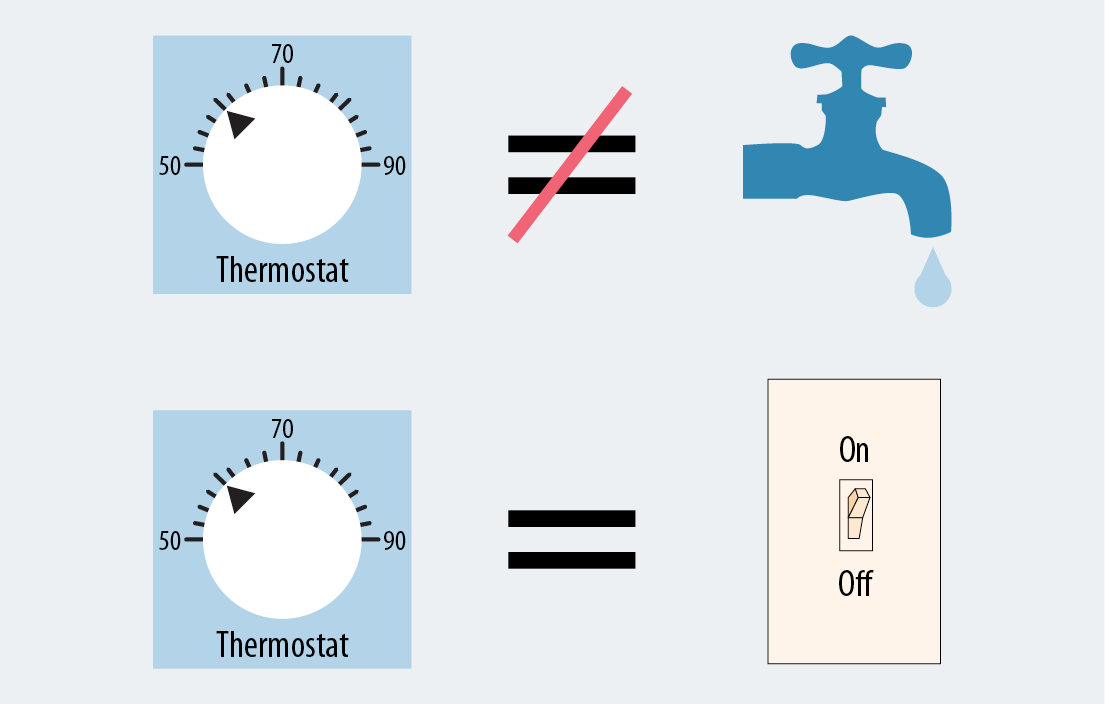CHAPTER 12
CHAPTER 12. Mental Model Diagrams
IN THIS CHAPTER
- Background and overview of mental models
- Rapid mental model diagrams
- Deriving structure
- Elements of Mental Model Diagrams
- Case study: Forward-Thinking Insurance Company
The term mental model has its roots in psychology. It refers to someoneâs thought process about how the world worksâtheir frame of reality.
Mental models allow us to predict how things work. They are cognitive constructs built on beliefs, assumptions, and past experiences. But a personâs mental model is a perception of a how a system functions, not necessarily how it actually may work.
For instance, say you come into your house on a cold day. To get warmed up quickly, you turn the thermostat way up. Your assumption is that the higher thermostat setting, the more heat will come out.
But a thermostat does not work like a faucet valve. Itâs more like a switch: the heat goes on or off depending on set temperature (see Figure 12-1). In this scenario, youâd have a wrong mental model of how the system actually works. The room wonât get warmer faster. Instead, the heater will simply stay on longer to reach a higher temperature.

FIGURE 12-1. Thermostats are more like switches, not faucets.
The lesson for providers of products or services is profound: your understanding of the systems you create differs from the userâs understanding. ...
Get Mapping Experiences now with the O’Reilly learning platform.
O’Reilly members experience books, live events, courses curated by job role, and more from O’Reilly and nearly 200 top publishers.

